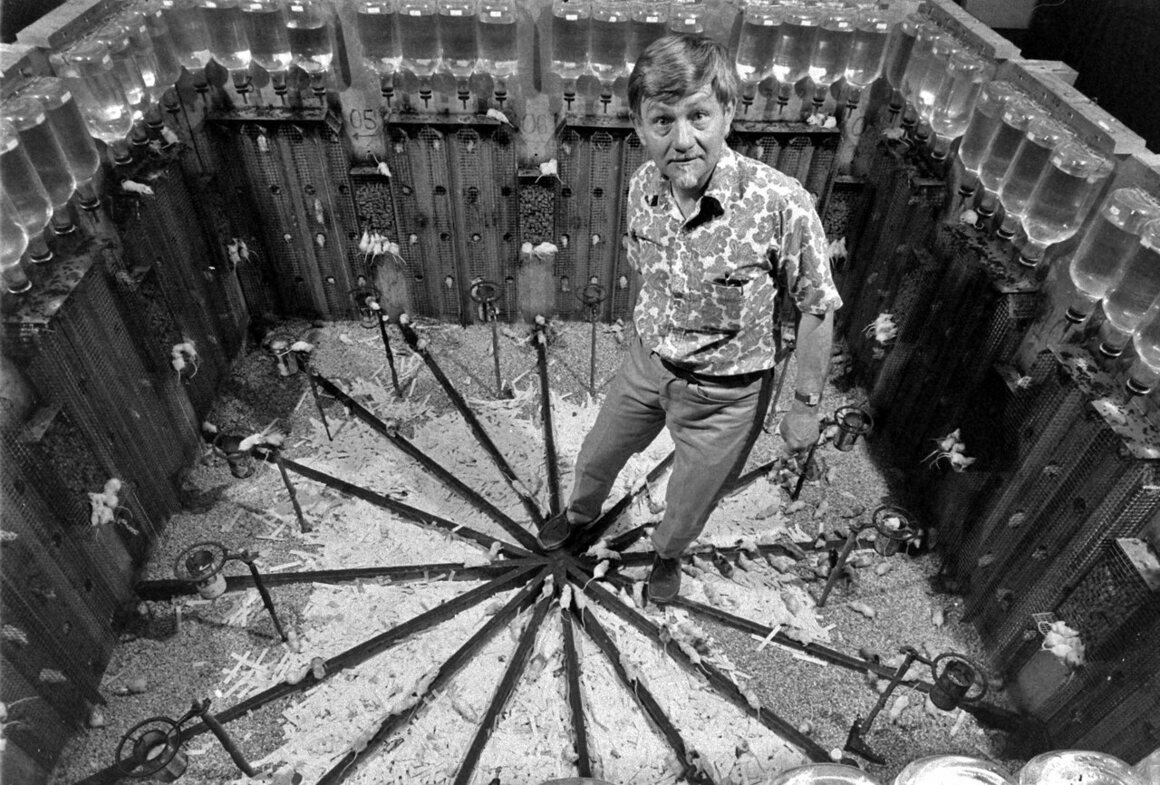
- John B. Calhoun conducted the "Universe 25" experiment with mice in a utopian environment with unlimited resources. Initially, the mice thrived and reproduced rapidly.
- As the population grew, social structures broke down, leading to aggressive behavior, social isolation and disengagement from normal activities. Mice abandoned social interactions and reproduction, and infant mortality rates soared.
- The experiment concluded with the complete breakdown of social norms and the eventual extinction of the mice population, despite abundant resources. Young mice raised in this environment failed to learn normal behaviors and retreated to isolation.
- Calhoun believed his findings had profound implications for human society, warning about the dangers of overpopulation, social disintegration and the loss of meaningful social roles. Critics argue that the experiment oversimplifies human behavior, but it raises important questions about abundance, social isolation and resource distribution.
- The experiment serves as a cautionary tale about the importance of a strong social fabric and the potential consequences of societal collapse, even in a world of material wealth and technological advancement. It highlights the need to address issues such as mental health, social disconnection and the evolution of societal norms.
In the 1970s, as the global population surged and fears of overpopulation gripped the world, behavioral researcher John B. Calhoun embarked on a groundbreaking experiment to explore a different kind of crisis: What happens to society when all needs are met, and all appetites are sated? The result, as revealed in his infamous "Universe 25" experiment, was a descent into chaos, violence and eventual extinction. While the study involved mice, its implications have sparked decades of debate about human society, social structures and the consequences of abundance. Today, as humanity grapples with questions of resource distribution, urbanization and societal decay, Calhoun's work remains a haunting reminder of the fragility of social order.
Rodent utopia gone wrong
Calhoun's "Universe 25" was designed to be a paradise for mice. In a carefully controlled environment, four breeding pairs of healthy mice were placed in a 9-foot-square enclosure equipped with unlimited food, water and nesting materials. The temperature was kept at a comfortable 68°F (20°C), and the space was free of predators or disease. By all accounts, it was a utopia.
Initially, the mice thrived. With no need to forage or compete for resources, they reproduced rapidly, doubling their population every 55 days. However, as the population grew, cracks began to appear in this seemingly perfect society. By the time the population reached 620 mice, the rate of growth slowed and social structures began to break down. Mice that couldn't find a role in the increasingly crowded environment became isolated, withdrawing from social interactions and forming what Calhoun termed "behavioral sinks."
Violence, cannibalism and the "beautiful ones"
As the population continued to grow, the mice exhibited increasingly aberrant behaviors. Dominant males became hyper-aggressive, attacking others without provocation and engaging in violent, often cannibalistic acts. Mothers abandoned their young, and infant mortality rates soared to 90% in some areas. Female mice, overwhelmed by the chaos, withdrew from mating altogether, focusing instead on grooming themselves to the point of obsession. Calhoun dubbed these mice the "beautiful ones," noting their pristine fur and complete disengagement from social or reproductive activities.
The final phase of the experiment, which Calhoun called the "second death," saw the complete breakdown of social norms. Young mice, raised in this dysfunctional environment, failed to learn normal behaviors. They showed no interest in mating or social interaction, retreating to the upper levels of the enclosure to live in isolation. The population peaked at 2,200 mice – far short of the enclosure's 3,000-mouse capacity – before plummeting to extinction. Despite the abundance of food and resources, the mice had lost the will to survive.
Lessons for humanity
Calhoun believed his findings had profound implications for human society. "For an animal so complex as man, there is no logical reason why a comparable sequence of events should not also lead to species extinction," he wrote in his 1972 study. He warned that if opportunities for meaningful social roles fell short of demand, violence and social disintegration would follow. At the time, his work resonated with concerns about urban overcrowding and "moral decay," though critics argued that his conclusions oversimplified the complexities of human behavior.
In recent years, the experiment has been revisited by scholars who question its applicability to humans. Medical historian Edmund Ramsden suggested that the collapse of Universe 25 may have been driven not by overpopulation but by excessive social interaction and the inability of mice to establish stable territories. Others have pointed out that the experiment's design – where aggressive mice monopolized resources – mirrors real-world issues of inequality and resource distribution rather than abundance.
A mirror to modern society
While the parallels between Calhoun's mouse utopia and human society are not perfect, the experiment raises important questions about the consequences of abundance, social isolation and the loss of meaningful roles. In an era of technological advancement and material wealth, many societies are grappling with declining birth rates, rising mental health issues and a sense of disconnection. Whether these trends are a harbinger of societal collapse or simply a reflection of evolving norms remains to be seen.
What is clear is that Calhoun's work serves as a cautionary tale about the delicate balance required to sustain a healthy society. As humanity continues to navigate the challenges of the 21st century, the lessons of Universe 25 remind people that even in a world of plenty, the survival of a species depends not just on resources, but on the strength of its social fabric.
Sources include:
Please contact us for more information.













